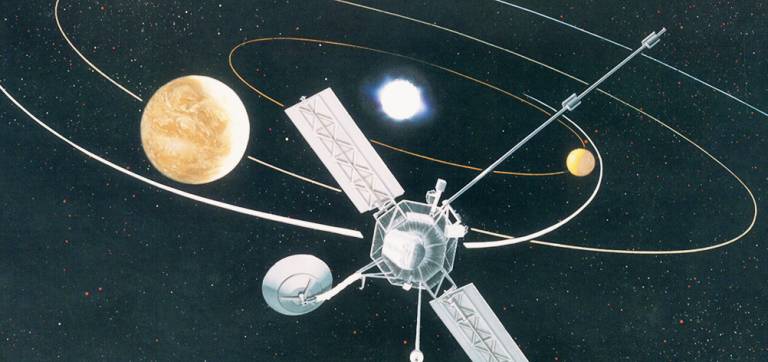UCL astrophysicists present latest research at National Astronomy Meeting
8 July 2013
Astrophysicists from UCL Physics and Astronomy and UCL's Mullard Space Science Laboratory have been presenting their latest results at the National Astronomy Meeting (NAM). The week-long event is the biggest annual astronomy conference in the country, and is organised by the Royal Astronomical Society.
UCL scientists presented dozens of results. Highlights included:
Supernova 1987A is a dust factory
Research led by Mikako Matsuura (UCL Physics and Astronomy) using the Herschel Space Observatory and the ALMA observatory has discovered that a nearby supernova has churned out vast quantities of dust. Supernova 1987A is a star which exploded in the Large Magellanic Cloud (a satellite galaxy of the Milky Way) in 1987. Since then, it has been expanding and cooling.
Dr Matsuura and her colleagues found that the explosion released enough dust to form 250,000 Earths. The discovery of such a large mass of dust should help us to understand how supernovae slowly spread and fill galaxies with gas, dust and small rocky particles, some of which may eventually end up in the next generation of stars and planets.
Latest news from LOFT
The Large Observatory For x-ray Timing (LOFT) is a proposed astrophysics mission currently being evaluated by the European Space Agency (ESA). Several staff members at the Mullard Space Science Laboratory are closely involved in the project and presented their latest work at NAM.
LOFT will study matter in extreme conditions, such as at the event horizons of black holes, and in neutron stars. These extreme conditions lead to extreme energies, which are best detected at very short wavelengths such as X-rays. LOFT will be able to detect these with far higher sensitivity than any comparable mission in the past.
Young stars blow bubbles
Work presented by Daisuke Kawata (MSSL) studies how bubbles that form in dwarf irregular galaxies affect the formation of stars there. As stars form they emit radiation and blow out gases that cause bubble-like cavities within galaxies. While these never get large in spiral galaxies (the motion and structure of these quickly erases the bubbles), dwarf galaxies are a different kettle of fish. Here, bubbles can become the dominant feature in images of the galaxies. Kawata's work involves numerical simulations of these bubbles in order to better understand their nature and how they trigger further star formation.
Related links
High resolution images
Supernova 1987A
Bubbles in Holmberg II
These images may be reproduced freely providing they are credited
Researcher profile
Media Contact
Oli Usher
UCL Faculty of Mathematical and Physical Sciences
020 7679 7964
o.usher@ucl.ac.uk
 Close
Close




